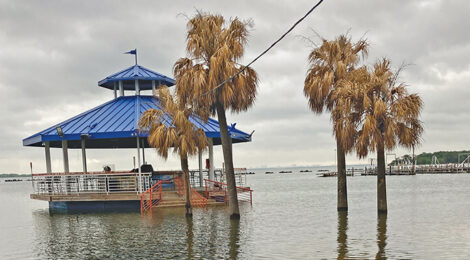
Fishing High Water Conditions
Forecasts predict above normal rainfall through the end of the year, so high water may be the new normal.
Story and photography by Brian Hughes
Late spring rains brought us high water, and flooding conditions, on many Texas lakes. It occurred to me that the way we handle high water is not something we talk about often. This is probably because Texas can traditionally be more of a dry state, with low water conditions being much more common.
However, the Old Farmers’ Almanac predicts we can expect above normal rainfall through the end of the year, so high water may be the new normal. Certainly we’ll take the rain, hoping that it doesn’t bring any destruction to life or property, but simply keeps our inland lakes full. Full lakes however mean that any new rains will raise lake levels above normal and that translates into new fishing patterns.
What Happens When A Lake Rises Above Normal Pool?
When a lake is at normal level and a rainstorm brings in new water, the lake will rise as the runoff flows into the impound from the surrounding lands or watershed into the feeder creeks and sloughs. In turn those feed the water into the lake.
With the dam as the controlling factor of any reservoir, the capacity for releasing water and the amount of incoming water, combine to determine just how far the lake will rise. Many times the dam will be allowed to release water at a rate that almost matches the incoming water. In that case the lake will not see much of an increase in total inundated area. There are other times a lake cannot be emptied at a rate anywhere near what is coming down the pike. This is because the dam is also tasked with flood control and if the downstream areas are already at capacity, there is nowhere for the released water to go other than flooding the surrounding areas.
************************************************************************
To read more, click here to SUBSCRIBE








